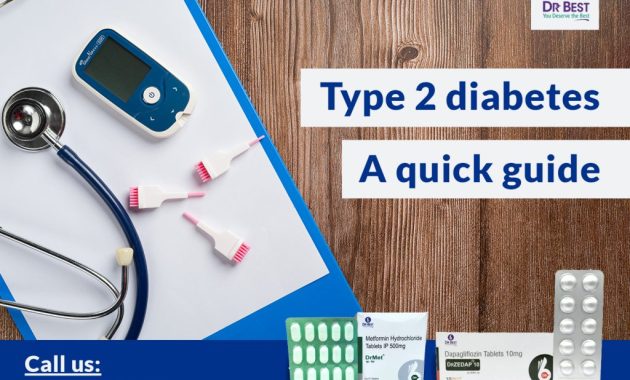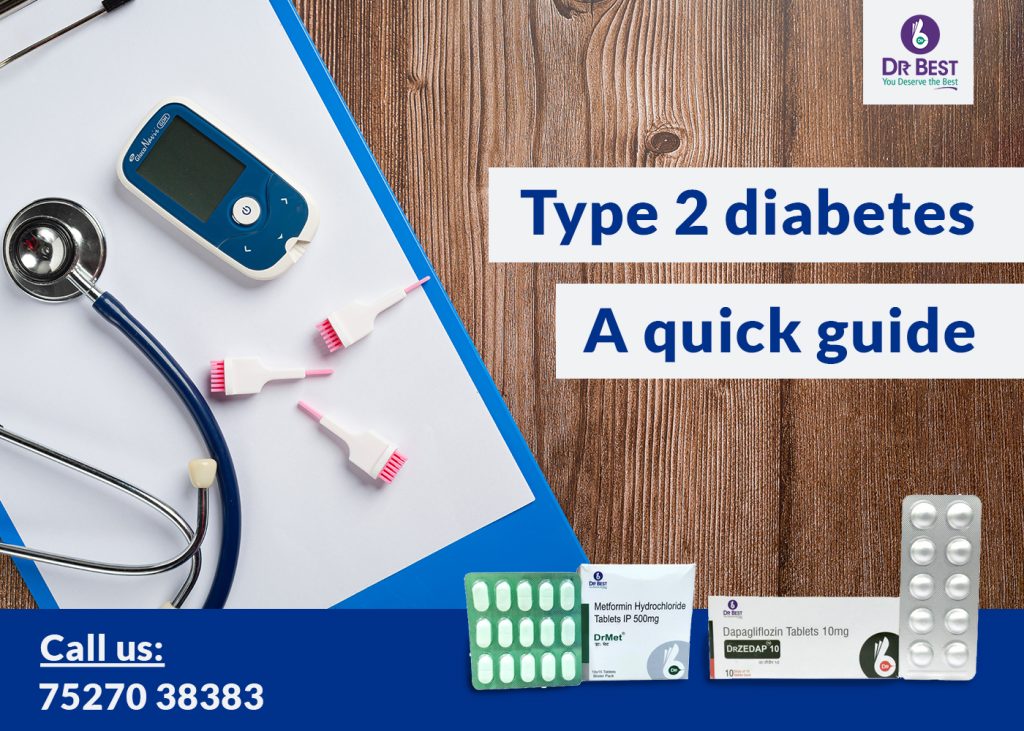
Diabetes: A Quick Guide to Understanding Your Symptoms
Diabetes, a chronic metabolic disorder, affects millions worldwide. Recognizing the signs and symptoms early is crucial for effective management. This quick guide to understanding your symptoms provides essential information. It empowers individuals to take proactive steps toward better health.
The Silent Threat: What is Diabetes?
Diabetes occurs when the body either doesn’t produce enough insulin or can’t effectively use the insulin it produces. Insulin is a hormone that regulates blood sugar levels. Without proper insulin function, glucose builds up in the bloodstream. This leads to various health complications. There are several types of diabetes, each with its unique characteristics and causes. Understanding these differences is important for accurate diagnosis and treatment.
Types of Diabetes: A Closer Look
Type 1 Diabetes
Type 1 diabetes is an autoimmune disease. The body’s immune system attacks and destroys insulin-producing cells in the pancreas. This type usually develops in childhood or adolescence. Individuals with Type 1 diabetes require insulin injections or insulin pump therapy to survive.
Type 2 Diabetes
Type 2 diabetes is the most common form of the disease. It often develops in adulthood. In Type 2 diabetes, the body either doesn’t produce enough insulin or the cells become resistant to insulin. Lifestyle factors, such as diet and exercise, play a significant role in the development and management of Type 2 diabetes.
Gestational Diabetes
Gestational diabetes occurs during pregnancy. It typically resolves after childbirth. However, women who experience gestational diabetes have an increased risk of developing Type 2 diabetes later in life. Careful monitoring and management of blood sugar levels are essential during pregnancy.
Common Symptoms: What to Watch For
Recognizing the symptoms of diabetes is the first step toward diagnosis. Symptoms can vary depending on the type of diabetes and individual factors. However, some common signs should not be ignored. Early detection and intervention can prevent serious health problems. This quick guide to understanding your symptoms emphasizes awareness.
Increased Thirst and Frequent Urination
High blood sugar levels can cause increased thirst. The kidneys work overtime to filter and absorb excess glucose. This leads to increased urination. If you find yourself drinking more water than usual and urinating frequently, it’s essential to consult a healthcare professional.
Excessive Hunger
Despite eating more, people with diabetes may experience constant hunger. This is because the body’s cells are unable to effectively use glucose for energy. The body signals a need for more fuel, leading to increased appetite.
Unexplained Weight Loss
Unexplained weight loss can occur when the body can’t use glucose properly. The body starts breaking down muscle and fat for energy. This can result in rapid weight loss, even with a normal appetite. This symptom is more common in Type 1 diabetes.
Fatigue
High blood sugar levels can lead to fatigue and low energy levels. The body’s cells are not getting the glucose they need to function properly. This can make you feel tired and weak, even after a full night’s sleep. This is a key aspect of this quick guide to understanding your symptoms.
Blurred Vision
High blood sugar levels can affect the lens of the eye. This can cause blurred vision. The vision may fluctuate. Prompt medical attention is necessary to prevent permanent damage.
Slow-Healing Sores
Diabetes can impair the body’s ability to heal wounds. High blood sugar levels can damage blood vessels. This reduces blood flow to the affected areas. Sores and cuts may take longer to heal. This is a serious complication that needs immediate attention.
Frequent Infections
Diabetes can weaken the immune system. This makes individuals more susceptible to infections. Urinary tract infections, skin infections, and yeast infections are common. Seek medical care if you experience frequent infections.
Diagnosing Diabetes: What to Expect
If you experience any of the above symptoms, it’s important to see a doctor. Several tests can diagnose diabetes. These tests will help determine the type of diabetes you may have. Early diagnosis is critical for effective management. This quick guide to understanding your symptoms helps with early detection.
Fasting Blood Sugar Test
This test measures your blood sugar level after an overnight fast. A result of 126 mg/dL or higher on two separate tests indicates diabetes.
A1C Test
The A1C test provides an average of your blood sugar levels over the past two to three months. An A1C level of 6.5% or higher indicates diabetes. This test is increasingly common for diagnosis.
Oral Glucose Tolerance Test (OGTT)
This test measures your blood sugar levels before and after drinking a sugary drink. This helps to diagnose diabetes and prediabetes. OGTT is often used to diagnose gestational diabetes.
Random Blood Sugar Test
This test measures your blood sugar level at any time of the day. A reading of 200 mg/dL or higher, along with symptoms, may indicate diabetes.
Managing Diabetes: Taking Control
Diabetes management involves a combination of lifestyle changes and medical interventions. The goals of diabetes management are to control blood sugar levels. This helps prevent complications. This quick guide to understanding your symptoms offers insights on this.
Healthy Diet
A balanced diet is essential for managing diabetes. Focus on eating whole grains, fruits, vegetables, and lean protein. Limit processed foods, sugary drinks, and saturated fats. Work with a registered dietitian to create a personalized meal plan.
Regular Exercise
Physical activity helps improve insulin sensitivity and lower blood sugar levels. Aim for at least 150 minutes of moderate-intensity exercise per week. This could include brisk walking, swimming, or cycling.
Medication
Depending on the type of diabetes and individual needs, medication may be necessary. This can include oral medications or insulin injections. Always take your medications as prescribed by your doctor.
Blood Sugar Monitoring
Regularly monitoring your blood sugar levels is crucial. This helps you and your doctor track your progress. It also helps adjust your treatment plan as needed. Use a blood glucose meter to check your blood sugar levels.
Regular Check-ups
Schedule regular check-ups with your doctor. This allows for monitoring your overall health. It also allows for early detection of potential complications. Your doctor can also provide guidance and support.
Complications: Understanding the Risks
Uncontrolled diabetes can lead to various complications. These complications can affect different parts of the body. Early detection and management can reduce the risk of these complications. This quick guide to understanding your symptoms highlights the importance of vigilance.
Cardiovascular Disease
Diabetes increases the risk of heart disease, stroke, and other cardiovascular problems. High blood sugar levels can damage blood vessels. This increases the risk of blockages and heart attacks.
Nerve Damage (Neuropathy)
High blood sugar levels can damage nerves throughout the body. This can cause pain, numbness, and tingling. It can also lead to problems with digestion and other bodily functions.
Kidney Disease (Nephropathy)
Diabetes can damage the kidneys. This can lead to kidney failure. Regular monitoring of kidney function is essential. This helps prevent kidney disease.
Eye Damage (Retinopathy)
High blood sugar levels can damage the blood vessels in the eyes. This can lead to vision loss. Regular eye exams are crucial for early detection and treatment.
Foot Problems
Diabetes can cause nerve damage and poor blood flow to the feet. This increases the risk of foot ulcers and infections. Proper foot care is essential to prevent complications.
Empowering Yourself: Take Action Today
Understanding the symptoms of diabetes is the first step. Taking action is essential for managing the disease effectively. This quick guide to understanding your symptoms empowers you. It gives you the knowledge to take control of your health. If you suspect you have diabetes, consult your doctor. They can provide an accurate diagnosis and personalized treatment plan. With proper care, people with diabetes can live long, healthy lives. Remember to prioritize a healthy lifestyle. This includes diet, exercise, and regular check-ups. This is a critical part of this quick guide to understanding your symptoms.
The Importance of Early Detection
Early detection of diabetes is a game-changer. It allows for timely intervention. This can significantly reduce the risk of developing serious complications. Regular check-ups, especially for those with risk factors, are very important. These include family history, obesity, and a sedentary lifestyle. Don’t delay seeking medical advice. Prompt action can make a substantial difference. This quick guide to understanding your symptoms stresses the importance of this.
Living Well with Diabetes: Support and Resources
Living with diabetes requires ongoing support and education. Connect with support groups and online communities. They can provide valuable information and emotional support. Learn about diabetes management from reliable sources. Consider working with a certified diabetes educator. They can help you develop a personalized management plan. Remember, you are not alone. Many resources are available to help you manage diabetes effectively. This quick guide to understanding your symptoms points you towards resources.
Conclusion: Your Health is Your Priority
Diabetes is a serious condition. It requires proactive management. Understanding the symptoms is key. This quick guide to understanding your symptoms provides a valuable starting point. Take control of your health. Seek medical advice if you experience any symptoms. By taking action, you can live a full and healthy life. Remember, your health is a priority. Take care of yourself. Your future self will thank you.
[See also: Related Article Titles]

